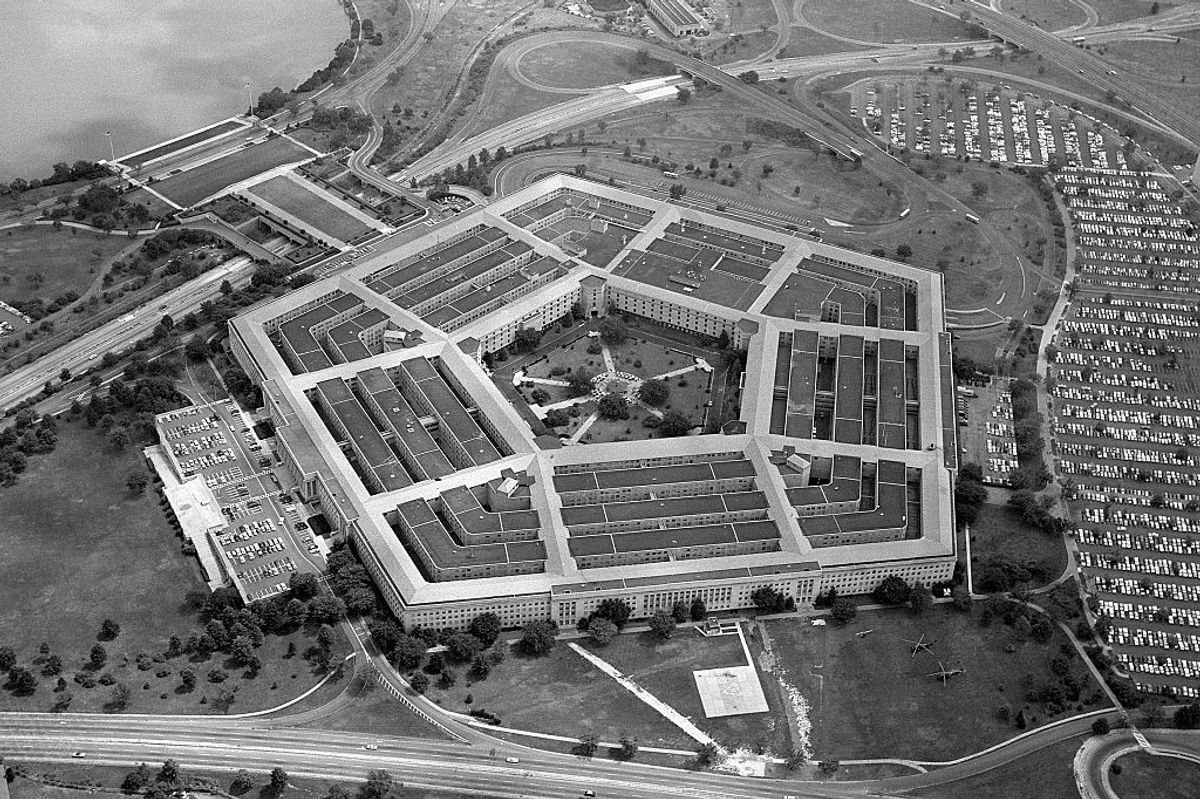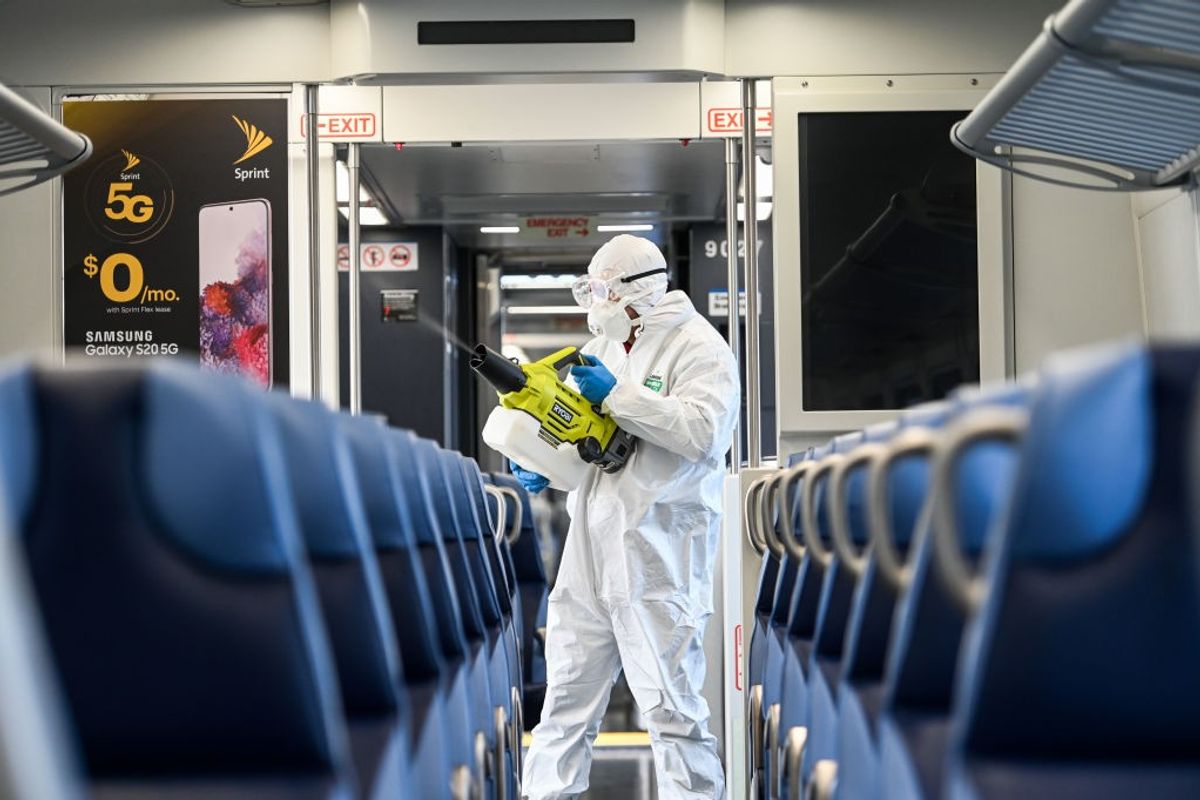SPECIAL REPORT — In 2025, technological advances will continue to reshape industries, transform national security strategies, and fuel global competition. Artificial Intelligence (AI) will expand its influence over various sectors while joining forces with quantum and semiconductor innovations to yield exciting economic and social benefits.
That’s the upside for the new year. Cybersecurity will rank No. 1 on the negative side of the ledger. Defenders will contend with old and novel threats to systems integrity even as the public will face calculated, generative AI- driven attempts to deceive, extort, and steal through various campaigns and schemes.
In assembling the “Top 7” technological and cyber developments for the new year, we’ve incorporated insights from leading think tanks, industry representatives, and tech media – including members of the Cipher Brief expert network. While speculative, these projections reflect the accelerating interplay between innovation, security, and global rivalry.
We’ve left aside guesses as to what policy decisions a new Trump administration and Congress will make, especially since many key tech and cyber appointments remain to be made.
That said, and with ample allowances for the unforeseeable and wildcards, we peer into the new year with equal parts hope and wariness.
1) AI, the Colossus: The dual-faced nature of AI will continue into 2025, with startling research breakthroughs promising great economic benefit alongside staggering adaptations of the technology by threat actors bent on crime and disruptions to national security. System defenders will employ AI to improve threat detection, anomaly spotting, and predictive analysis, while attackers – state-sponsored adversaries and cybercriminals – will harness AI capabilities in ever-more-elusive ransomware, phishing, and malware deployment campaigns.
On the plus side of the ledger, some observers see “agentic AI” as the consumer innovation of the coming year, promising a new era in human-AI interaction. Also anticipated is an economy-boosting “convergence effect” as AI combines with quantum computing, Operational Technology (OT) and Industrial Control Systems (ICS), biotechnology and medical research, and 6G technologies.
At the same time, these blended environments will raise cybersecurity risks as the broader integration of AI into multiple operational systems opens new threat vectors for exploitation. One key question is whether the U.S. will increase offensive cyber operations in response.
2) Cybersecurity and evolving threats: As noted above, AI figures prominently in both cybersecurity defenses and risks. However, the need to defend against and proactively neutralize cyber threats extends beyond AI. Critical infrastructure, for example, is open to disruption by both cyber and physical means, with uneven capabilities of system defenses across infrastructure sectors.
Vulnerabilities in supply chains, cloud computing, and Internet-of-Things (IoT) devices will be compounded by threat actors becoming more adept in AI-aided system breaches, deepfake production, cybercrime-as-a-service syndicates, and alliances between state-sponsored and criminal freelancers. Ransomware tactics and technology continue to evolve as quickly as abilities to counter them.
Effective defenses against these malicious trends will rest on a variety of responses, including tighter and better harmonized cyber regulations and the adoption by industry of self-protective measures such as compliance audits, penetration testing, and third-party risk assessments. Government and industry collaboration on comprehensive incident response plans will be key.
Looking for a way to get ahead of the week in cyber and tech? Sign up for the Cyber Initiatives Group Sunday newsletter to quickly get up to speed on the biggest cyber and tech headlines and be ready for the week ahead. Sign up today.
3) Semiconductor race intensifies: As the engine behind technological progress, semiconductor development and manufacture will continue to be a pivot point in global competition. Chips not only factor into almost every consumer device on the planet, but they power next-generation prospects in key areas, such as GPU’s, TPU’s, and AI accelerators used in training and deploying AI models, and advanced semiconductors driving development of quantum processors.
Issues abound, however, in maintaining the breakneck pace of semiconductor development. Supply chain concerns top the list, with the highly concentrated nature of the most advanced players in the sector – TSMC and Samsung — a potential crippling vulnerability. Chip fabrication and equipment costs have reached all-time highs, with new fabs costing over $20 billion, an investment peak that only a few companies (and countries) can reach.
And then there is the issue confronting many technology sectors: shortfalls in talent and experience. The semiconductor industry faces worldwide shortages in engineers, technicians, and researchers to design, manufacture, and innovate in chip technology.
Uncertainty over national approaches to this vital area, driven by tension between the U.S. and China, will impact the sector throughout 2025, as tit-for-tat export controls, trade restrictions, and bans on investment threaten global supply chains and create expanding gaps between those capable of key innovations – production of 2nm and sub-2nm process nodes, for example – and those left behind with aging chips and architectures.
4) Expansion of edge computing: As IoT and 5G technology deployments grow, processing data at the “edge” – closer to where it is generated – will reduce latency issues and accelerate decision-making. In a sense, edge computing represents an emerging critical infrastructure as it helps to reduce network congestion, enhances system security through decentralized data processing, and supports factory and supply chain efficiencies in maintenance and process automation tasks. Edge computing also factors into the development of driverless vehicles and other autonomous applications.
At the same time, as IoT devices become commonplace in critical infrastructures such as power grids, transportation systems, and healthcare facilities, new vulnerabilities may arise to both cyber and physical attacks. Data privacy, for example, could be threatened by less robust encryption protections in edge devices, leading to the exposure of sensitive health or financial data. Also, compliance with privacy regulations in a distributed data processing system may prove burdensome for smaller and less well-financed organizations.
5) The quantum age: The coming year is expected to see a bridging between theoretical and practical applications of quantum science. Positive outcomes will depend on continued improvements by world-leading computing entities – IBM and Google among them – in increasing stable qubits and reducing quantum error. If achieved, advances in real-world uses of quantum computers, quantum enhancements of AI technology, and new applications in quantum communications and sensing all appear within reach.
A long-standing concern is what quantum science means for conventional cryptography, with the widespread expectation that existing encryption methods will fall prey to the code-busting capabilities that quantum offers. Consequently, both governments and organizations will strive to accelerate development and deployment of post-quantum cryptographic algorithms to safeguard data against future quantum computing threats.
Of particular interest in this regard is the adoption of NIST-approved post-quantum cryptographic algorithms into global financial systems and secure communication networks.
Are you Subscribed to The Cipher Brief’s Digital Channel on YouTube? Watch The Cipher Brief’s interview with CIA Director Bill Burns as he talks about The Middle East, Russia, China and the thing that keeps him up at night.
6) The “pacing threat” of China: Continuing revelations surrounding the China-sponsored Volt and Salt Typhoon cyber campaigns are likely to roll on into the new year. The persistence of the Salt Typhoon hacking and implant operation targeting U.S. telecommunications in particular, has been described by deputy national security advisor Anne Neuberger as posing a “risk of ongoing compromises of U.S. calls.”
These cyber penetrations lie alongside other Chinese challenges in technology matters, including AI innovation, chip competition, defense applications like hypersonics and stealth aircraft, worldwide deployment of 5G architectures, space exploration, and continuing thefts of intellectual property.
Beijing’s fusion of civilian and PLA modernization efforts suggests that every emerging technology – AI, quantum, biotechnology – will be used to strengthen existing military capabilities and fuel further geopolitical ambitions. China has already set out “intelligentized warfare” as a national security priority that focuses on AI, big data, and advanced analytics to transform military operations.
China also has sought leadership roles in global standard-setting bodies to influence international rules for emerging technologies like AI, 5G, and quantum computing, while containing U.S. sway in these forums.
7) Cyber-Tech in the defense sector: Efforts to redefine the battlefield will continue apace in 2025, drawing on both real-world experiences in various conflict zones and the constant forward momentum of leading-edge technologies. Pentagon and allied efforts to improve multi-domain command and control systems will benefit from AI development, expansion of satellite communications constellations, and improved methods for terrestrial connectivity. Data integration and decision-making support to deployed commands is likely to be emphasized, especially in concert with private sector manufacturers and startups.
Hypersonics, stealth technology, and autonomous platforms (areas of keen interest to China as well) will continue to gain traction even as exploration of directed-energy weapons and cyber offensive and defensive capabilities continues.
The contested nature of space will continue to emerge, with advances in intelligence, surveillance, and reconnaissance (ISR) capabilities, continued investigation of self-protecting satellite constellations, and development of kinetic and non-kinetic means to disable or destroy enemy satellites.
Read more expert-driven national security insights, perspective and analysis in The Cipher Brief.












